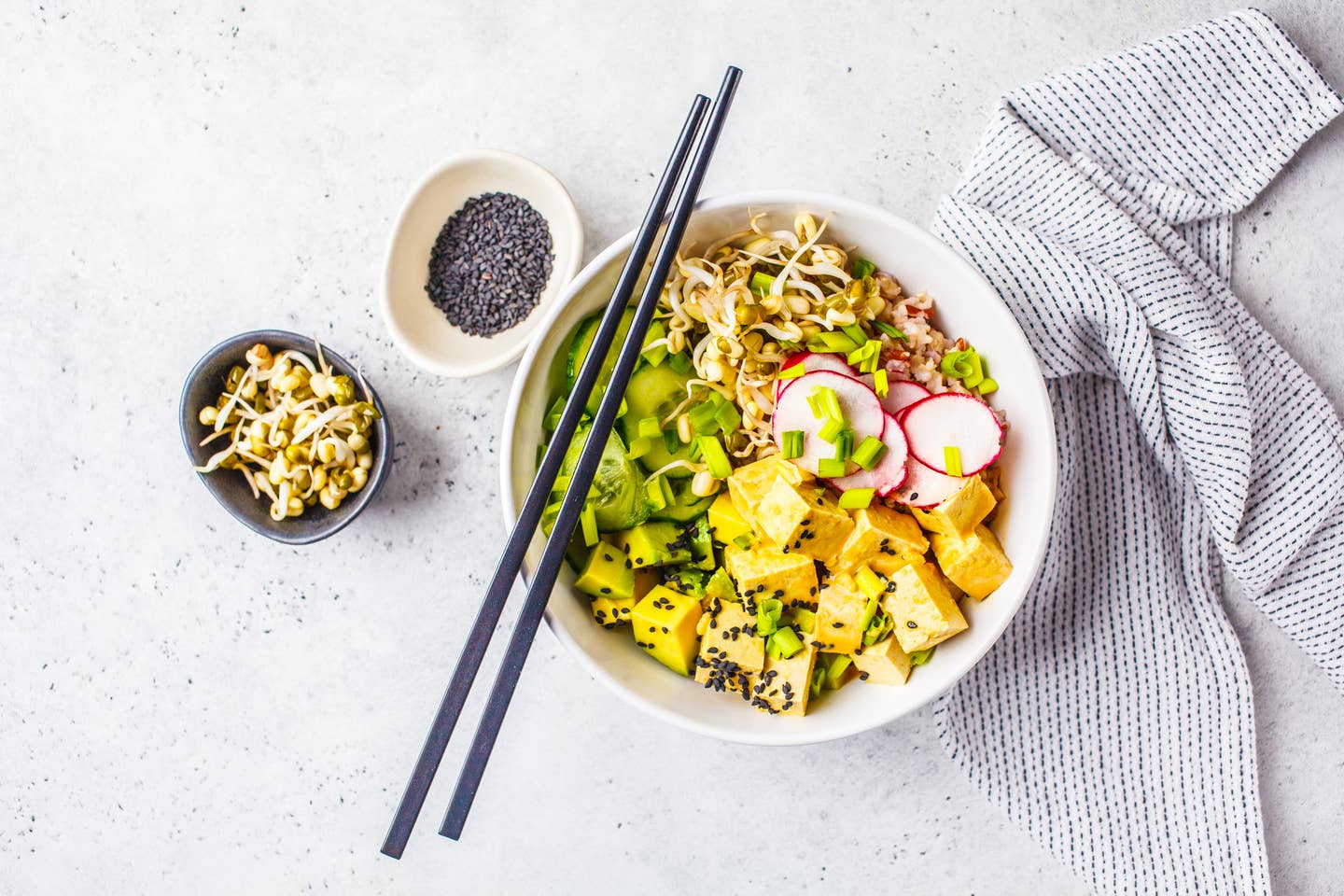
5 Best Foods to Fight Seasonal Depression and Lift Mood all Winter
If you’re starting to feel those winter blues as the temperatures drop and the sun barely stays above the horizon for over eight hours, understand that your feelings you’re not alone. About 10 million Americans experience Seasonal Affective Disorder (SAD) every year, a subtype of depression that typically occurs around this time of year. Symptoms include difficulty waking up, lack of focus, and a lower-than usual mood set point.
“Individuals prone to SAD may experience feelings of a blue mood and greater stress this season," says Dr. Uma Naidoo, M.D., director of nutritional and lifestyle psychiatry at Massachusetts General Hospital, faculty member at Harvard Medical School and author of This Is Your Brain on Food. "Individuals who previously felt alright [in past years] may be impacted by less daylight during winter due to the uncertainty and fear amidst the ongoing pandemic.”
As the days get shorter and the weather colder, you may feel yourself emotionally drained, but there are healthy ways you can ease your symptoms, primiarily by eating healthy. “Food and nutrition are powerful tools within our control to help our mental well-being,” says Dr. Naidoo, who has extensively studied the food-mood connection. She recommends staying away from processed or junk foods full of sugar and salt, as they can disrupt the gut microbiome and worsen mood. Instead, she adds, lean towards more plant-based whole foods.
5 Foods to Beat Winter Blues and Boost Mood
1. Folate-rich foods like lentils and leafy greens
Folate is key in preventing and easing depressive symptoms. A 2017 study published in the Journal of Psychiatric Research found that individuals with depression have lower levels of folate than individuals without depression. “A deficiency in Vitamin B12 results in a folate deficiency, which can ultimately contribute to a loss of brain cells, chiefly those located in the hippocampus,” says Dr. Naidoo. “Termed ‘hippocampal atrophy’, this loss of brain cells is associated with depression.”
Believe it or not, a ton of plant-based foods contain folate. For instance, a cup of cooked lentils has about 358 mcg of folate, which is 90% of the daily value. Leafy greens such as spinach, broccoli, and kale are also filled with folate, along with many other brain-boosting vitamins. If you’re not much of a cook, throw together an easy, folate-rich salad with leafy greens as the base and cooked lentils as a topping!
2. Fibrous foods, such as berries and whole grains
“Fibrous foods keep you satiated, are easy to digest, and promote the growth of good gut bacteria,” says Dr. Naidoo. A 2020 study published in Nutrition Reviews found evidence that a high-fiber diet can potentially lower inflammation, which results in the alteration of neurotransmitter concentrations to reduce symptoms of depression. Inflammation in the brain is linked to depression and anxiety, comments Dr. Naidoo.
Fiber, found in a variety of foods, reduces the body’s cholesterol absorption, promotes blood sugar control, and offers many other health benefits. Berries are fibrous fruits –– just one cup of raw raspberries contains 8 grams of fiber. You can also find a ton of fiber in low-glycemic whole grains, such as oats, quinoa, and buckwheat. For a fiber-rich quick fix, prepare a mixed berry smoothie or overnight oats topped with berries!
3. Iron-rich foods, like cruciferous vegetables and soy
A 2017 study published in Psychiatry Research found that dietary zinc and iron may be associated with a decreased risk of depression. “In fact, a large amount of iron is found in the basal ganglia, a collection of brain cells that have been implicated in depression,” comments Dr. Naidoo. She recommends consuming iron-rich foods with vitamin C to enhance iron absorption.
Cruciferous vegetables such as broccoli and cauliflower are filled with iron and vitamin C. They are also a great source of other nutrients such as vitamin K, folate, and potassium. Tofu, a popular plant-based protein, contains about 3.4 mg of iron per half-cup serving –– which is 19% of the daily value. Turn a weeknight dinner into an iron rich meal by making a quick, tofu and veggie stir fry or a creamy broccoli soup!
4. Nuts and seeds rich in omega-3 fatty acids
“Omega-3s are essential for mental health because they lower inflammatory markers in the brain”, says Dr. Naidoo. A 2017 report published in Critical Reviews in Food Science and Nutrition suggests that deficiency of omega-3 fatty acids may contribute to the development of mood disorders, like depression.
Surprisingly, flax seeds are the most richest whole-food source of the omega-3 fatty acid alpha-linolenic acid (ALA). They contain about 2,350 mg per tablespoon of whole seeds, which is greater than the daily value. These are great in salads, smoothies, and even as a plant-based egg substitute while baking. Other nuts and seeds rich in omega-3 fatty acids include walnuts, chia seeds, and hemp seeds. An easy way to get your daily omega-3s in would be a DIY trail mix filled with flax, walnuts, and your favorite dried fruit!
5. Fermented foods filled with probiotics
A 2018 study published in Brain, Behavior, and Immunity suggests that improving the composition of the gut microbiota using prebiotics and probiotics may produce beneficial effects on anxiety and depression. “Probiotic-rich foods are filled with good bacteria that help your body and brain,” comments Dr. Naidoo. She recommends passing on junk foods even though they may be filled with probiotics, like sugar-rich yogurts and heavily sweetened kefir.
Tempeh, a popular plant-based source of protein, is a fermented soybean product. This is a great way to incorporate probiotics in your diet as it contains protein and vitamin B12, leaving you feeling full. Other fermented foods include kimchi, sauerkraut, and pickles –– all of which can be incorporated into basic meals. For instance, add a pickle to your veggie burger or add kimchi to your fried rice!
More From The Beet






